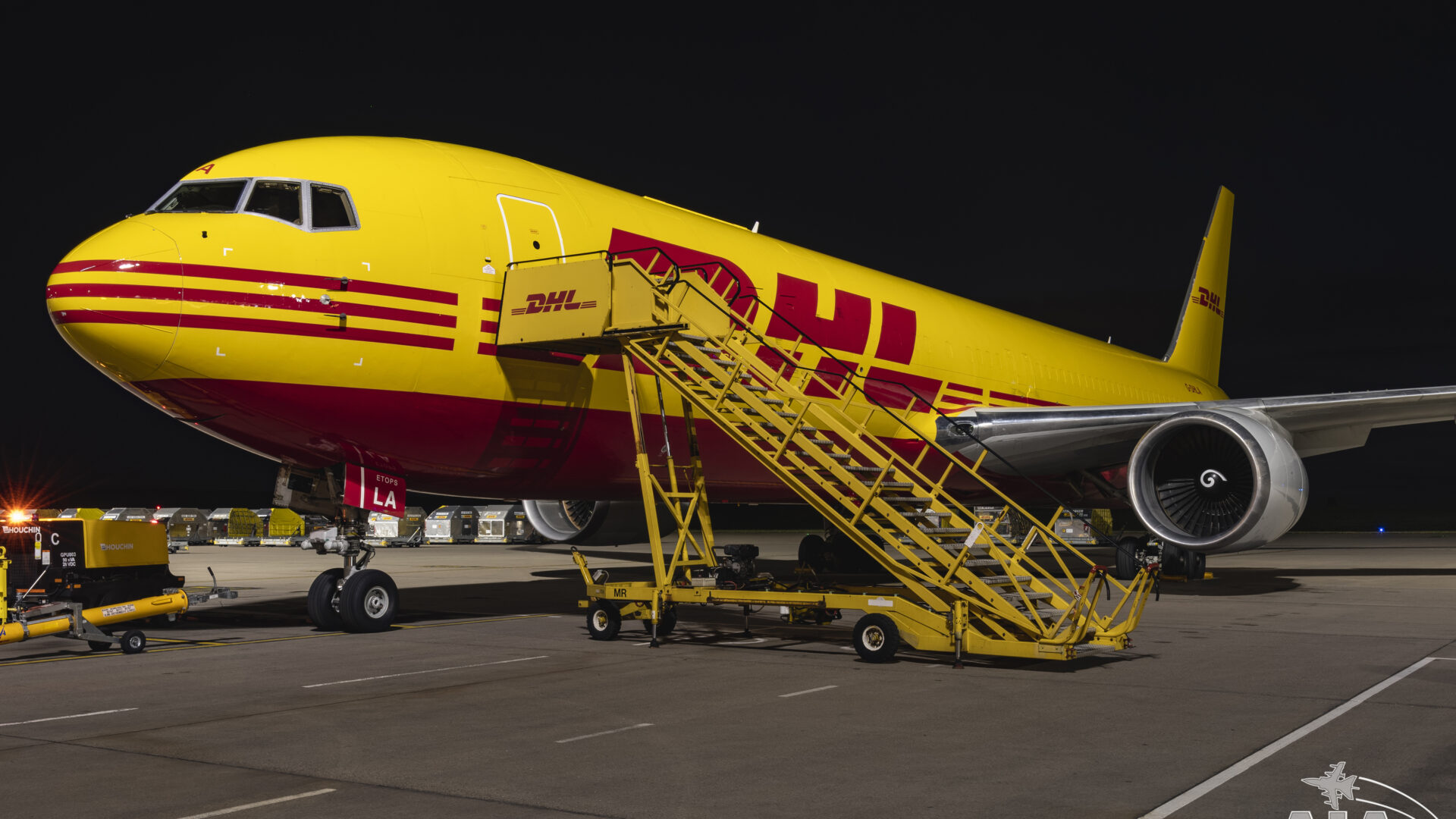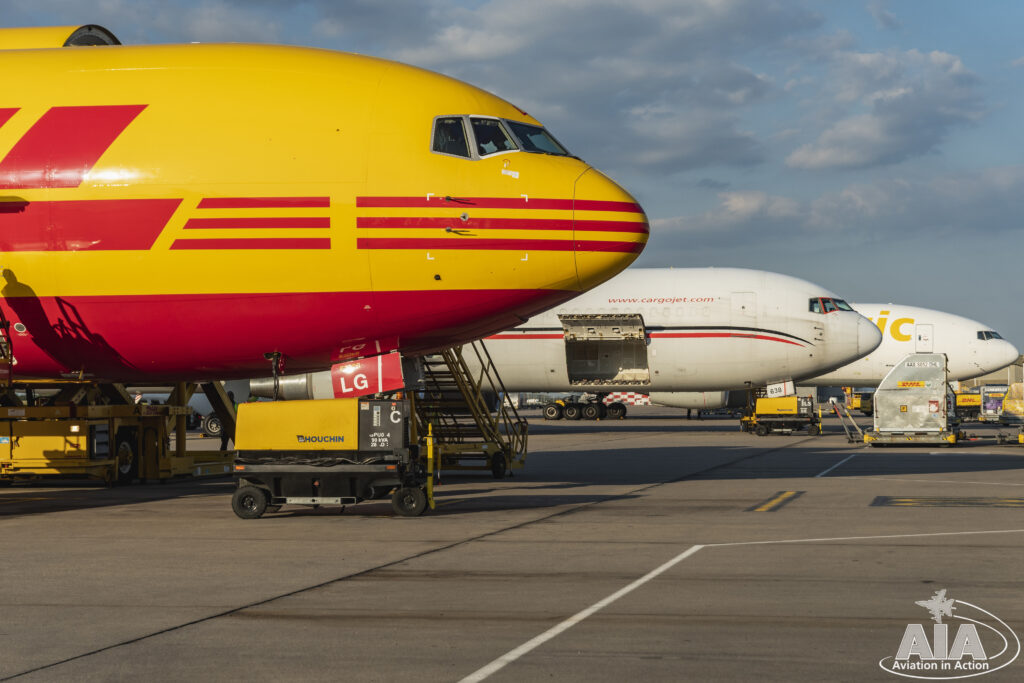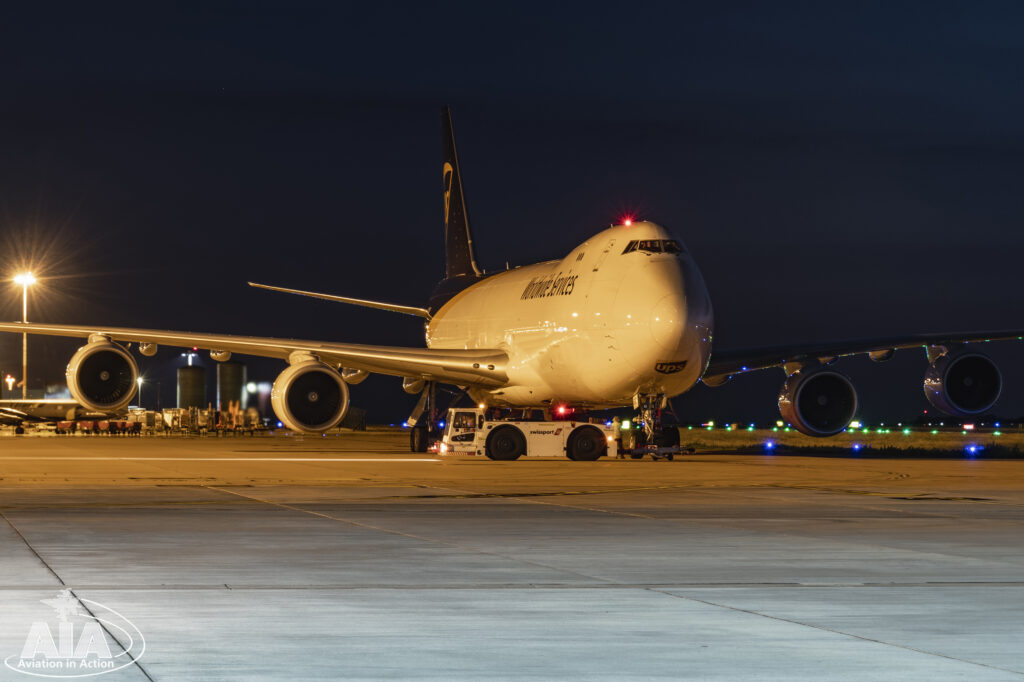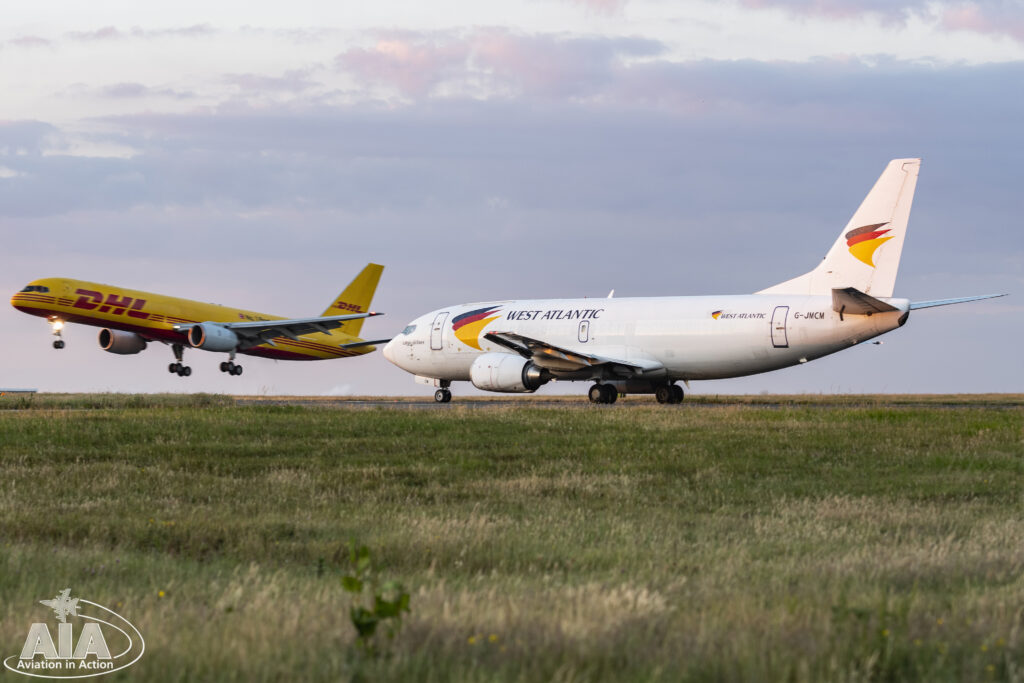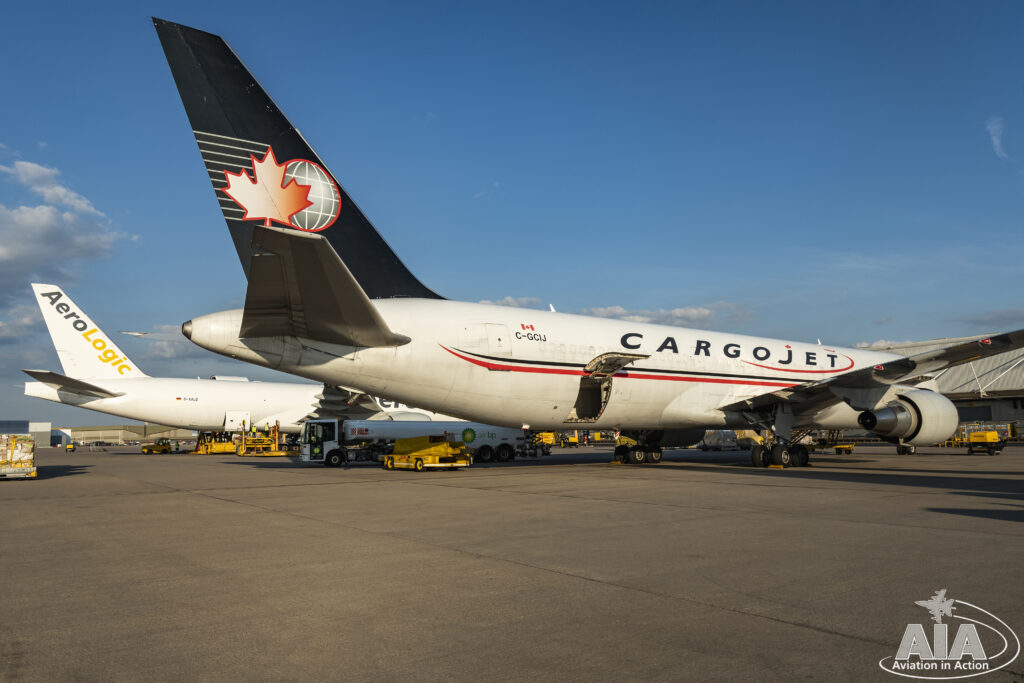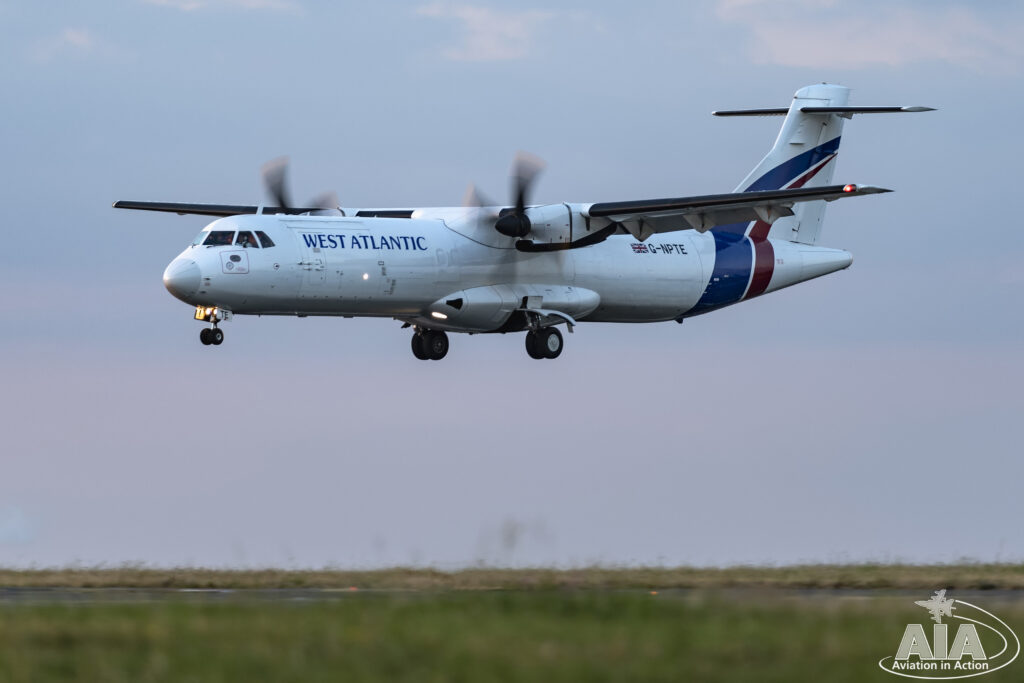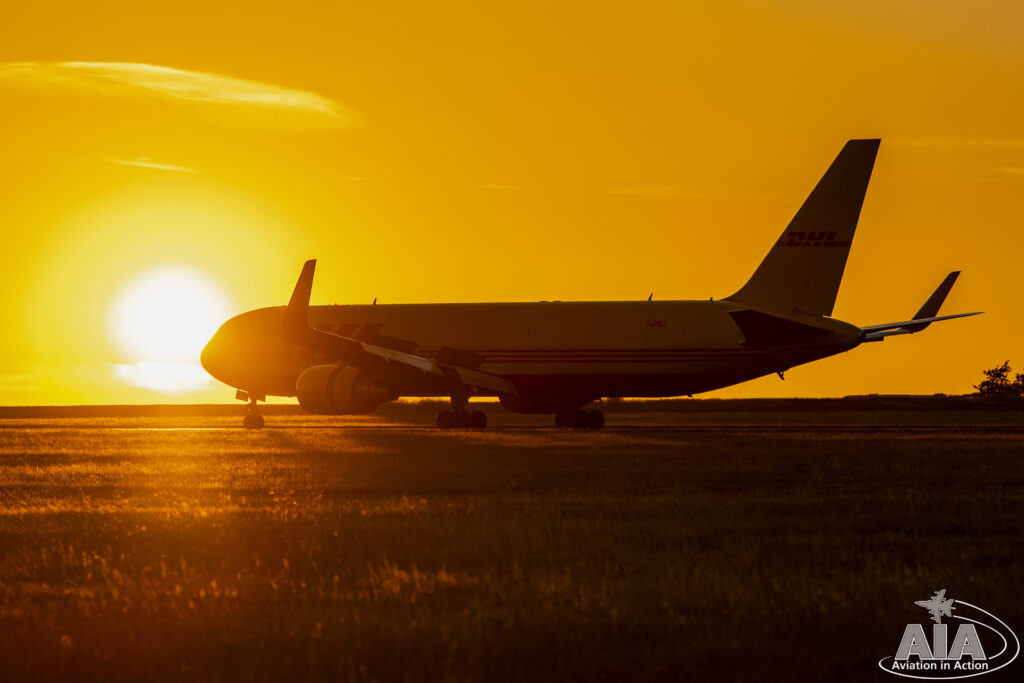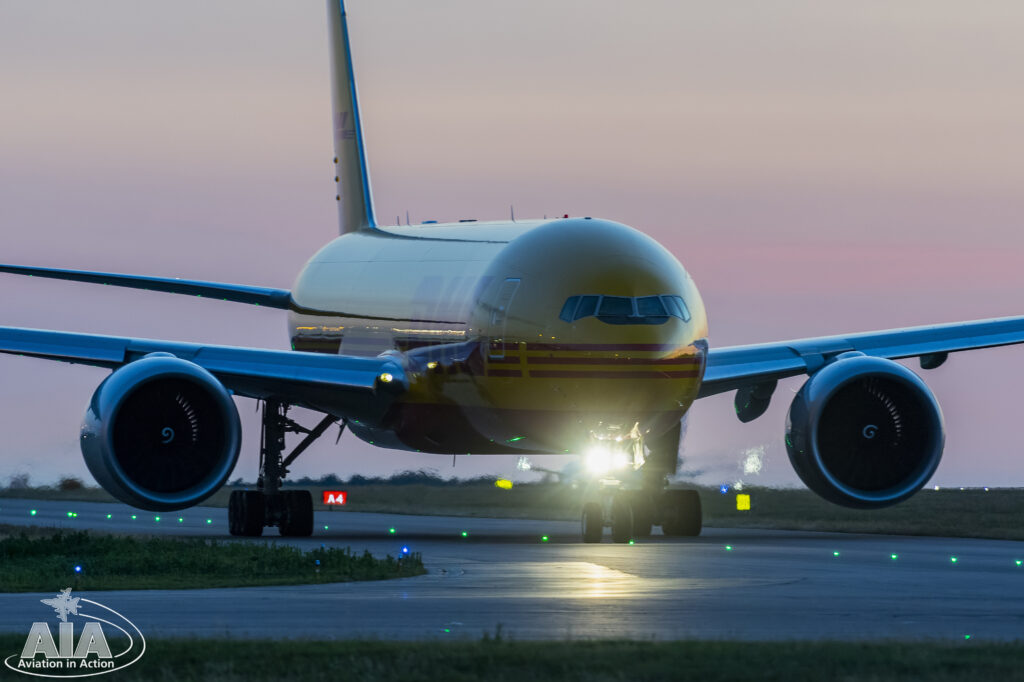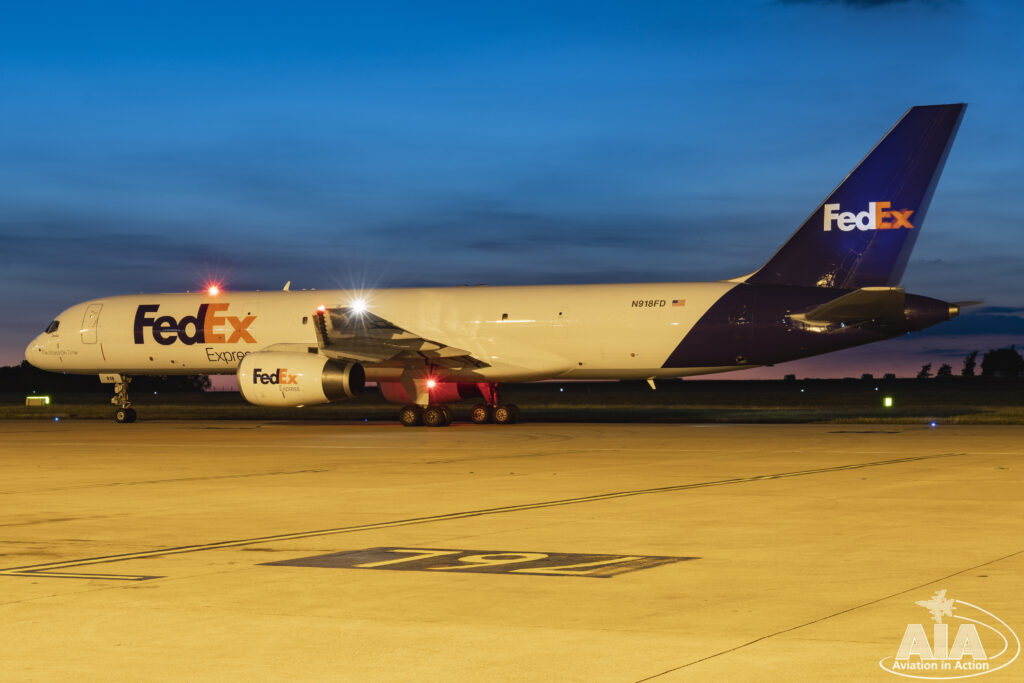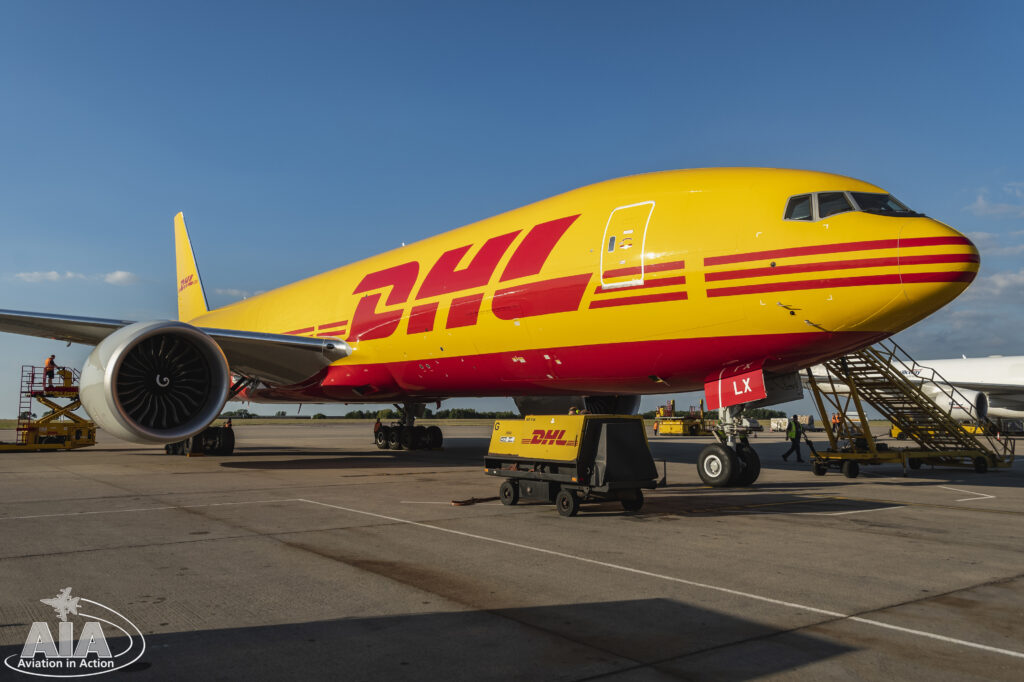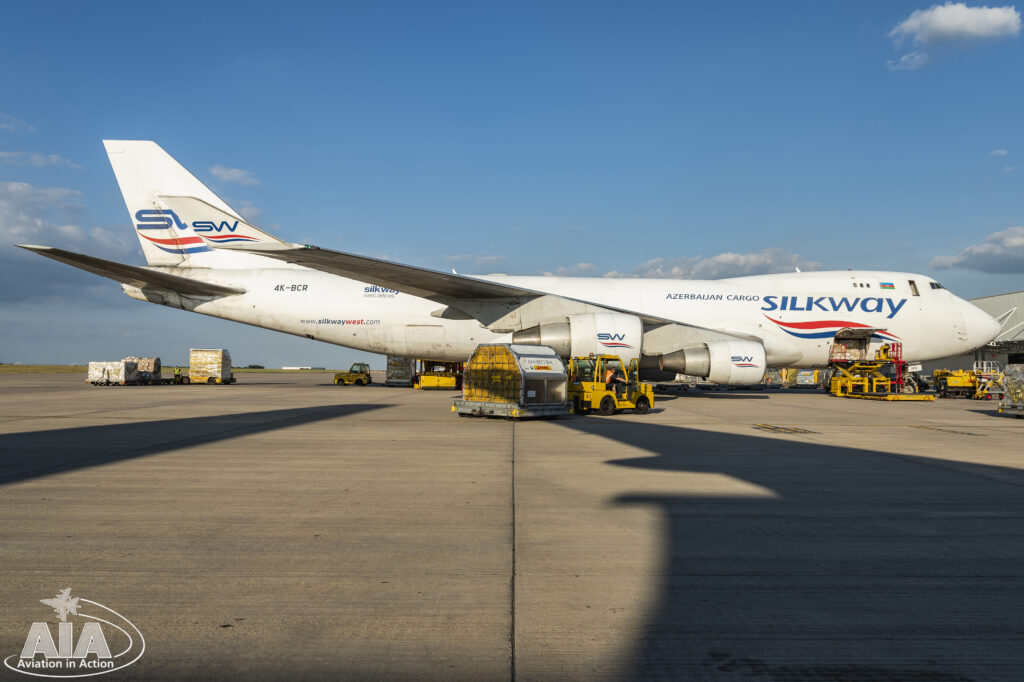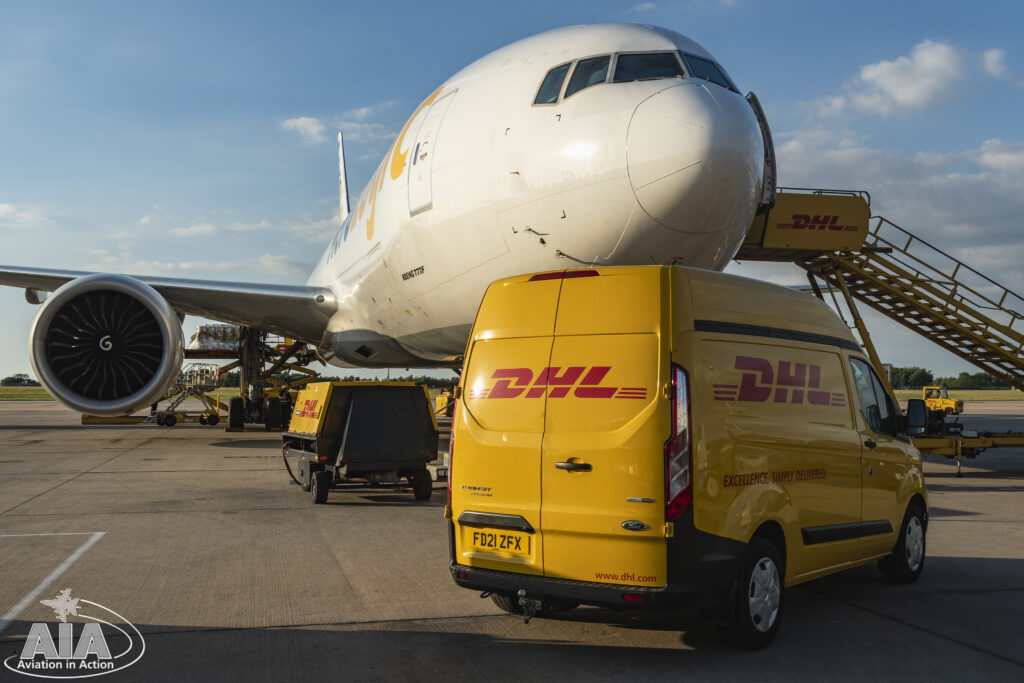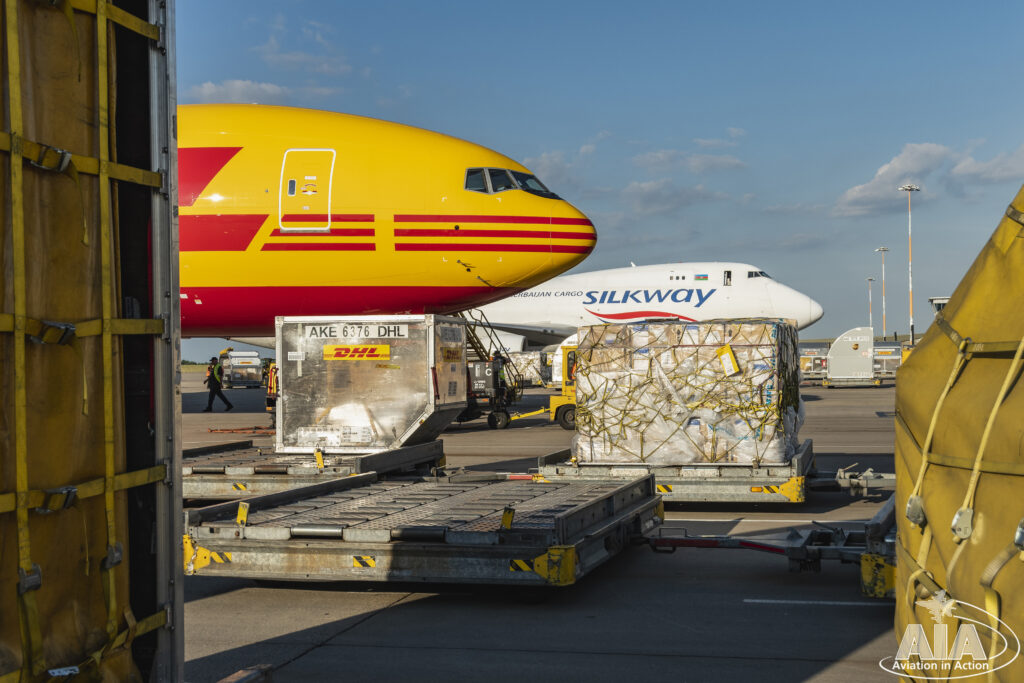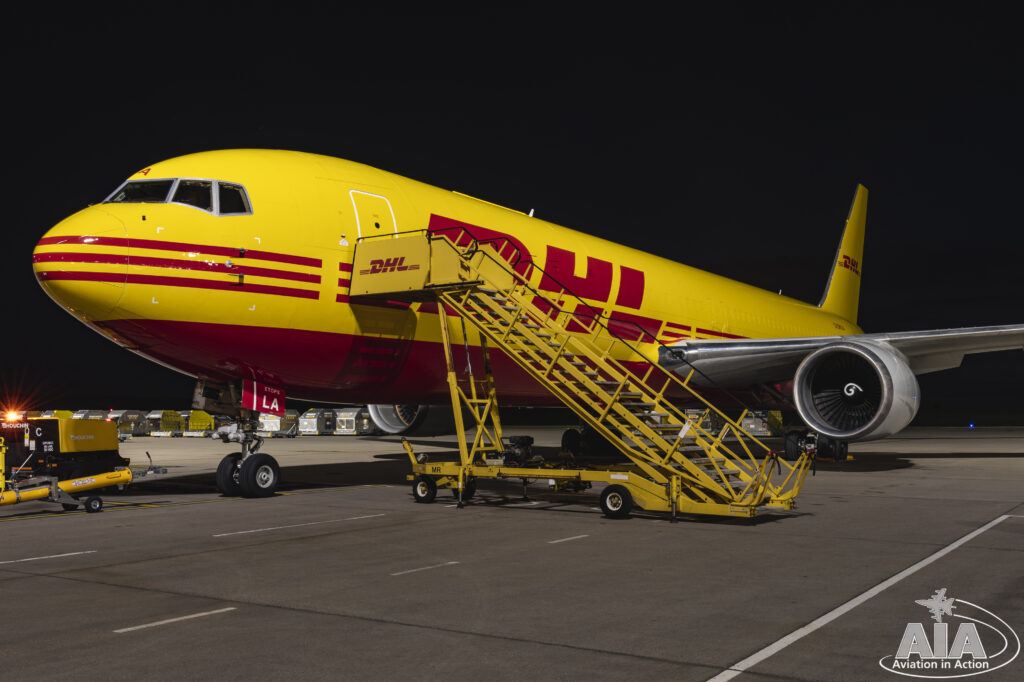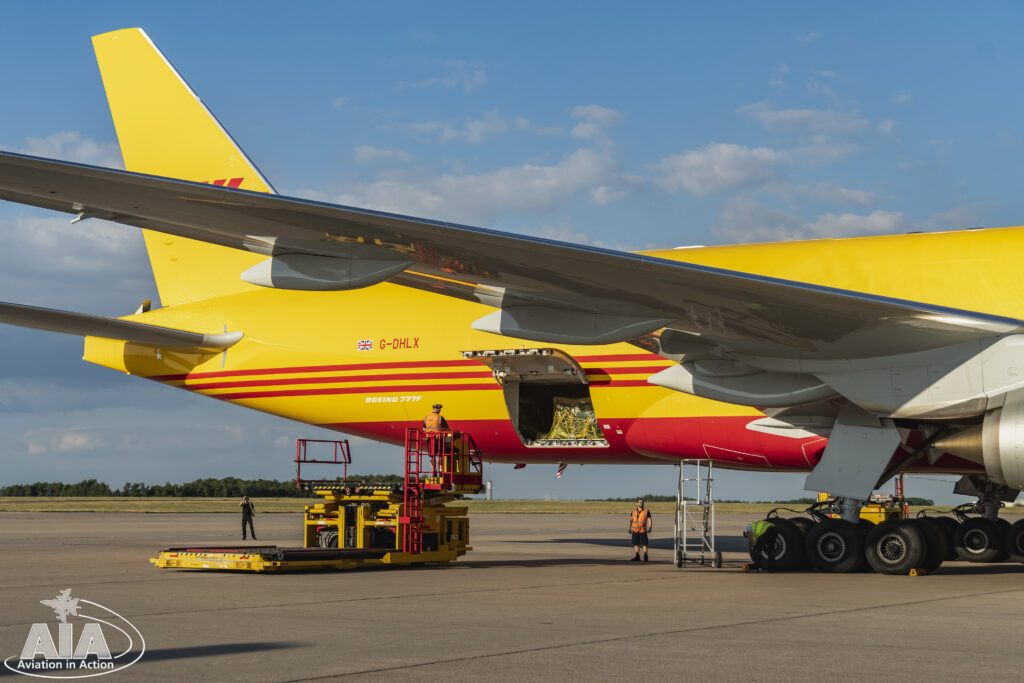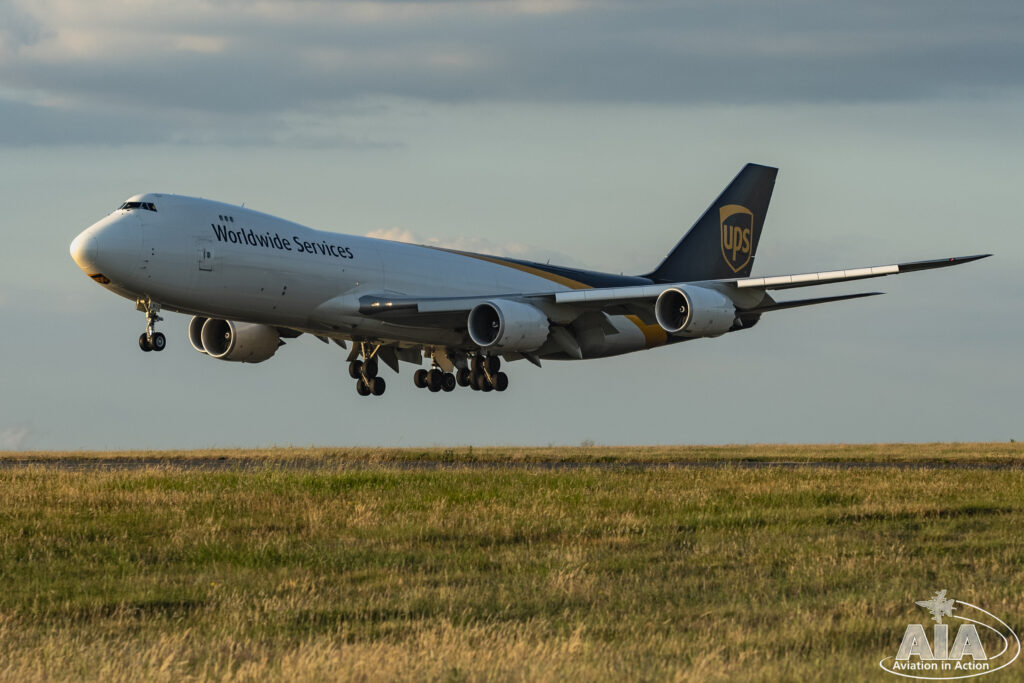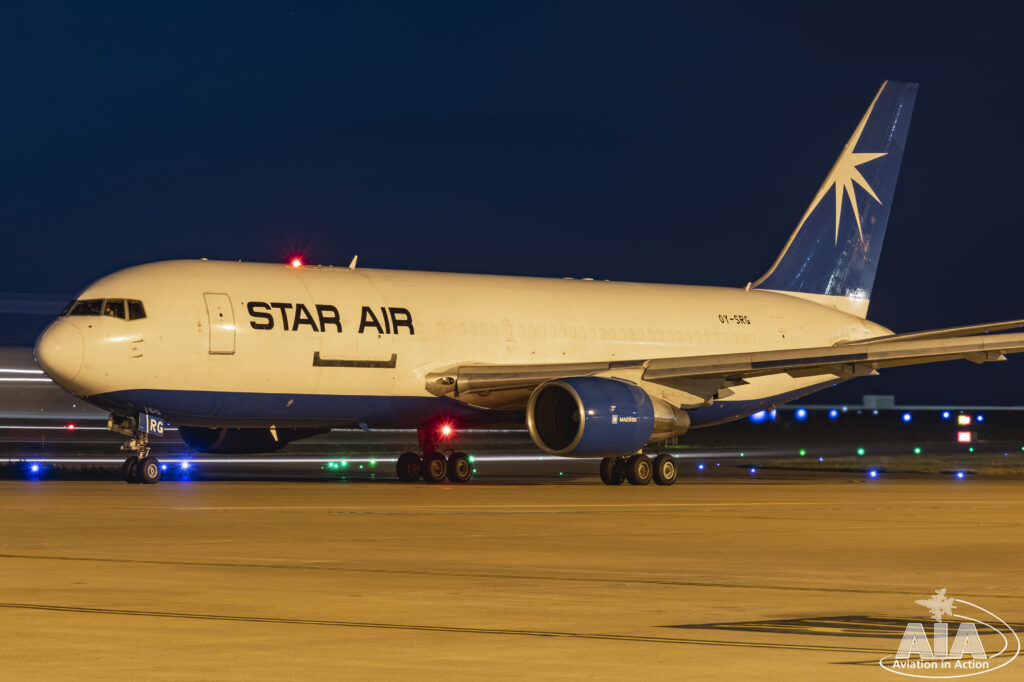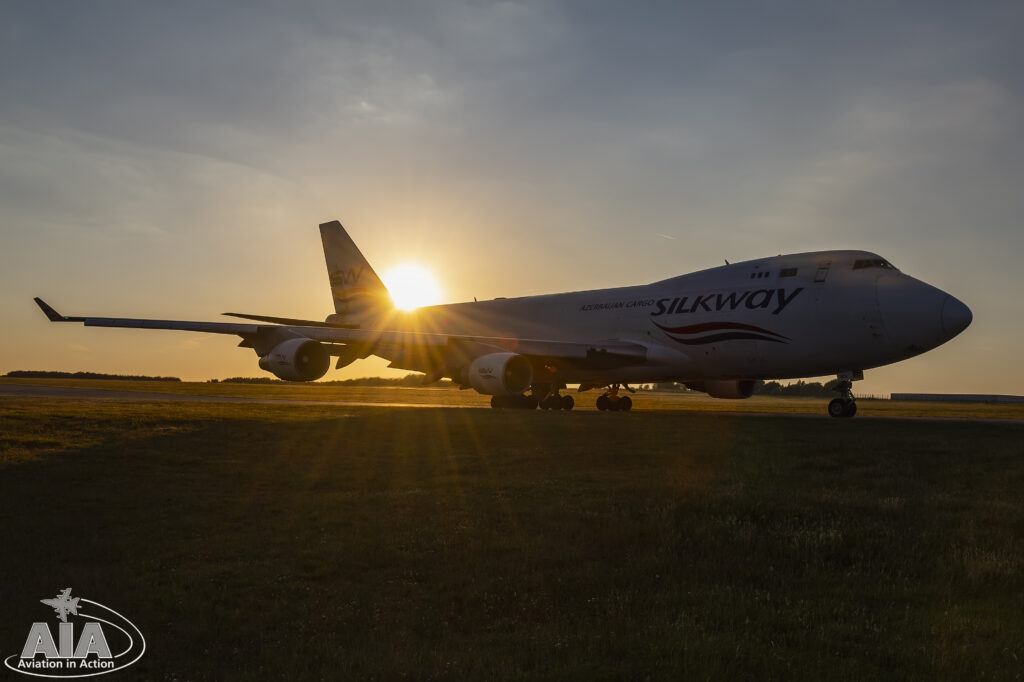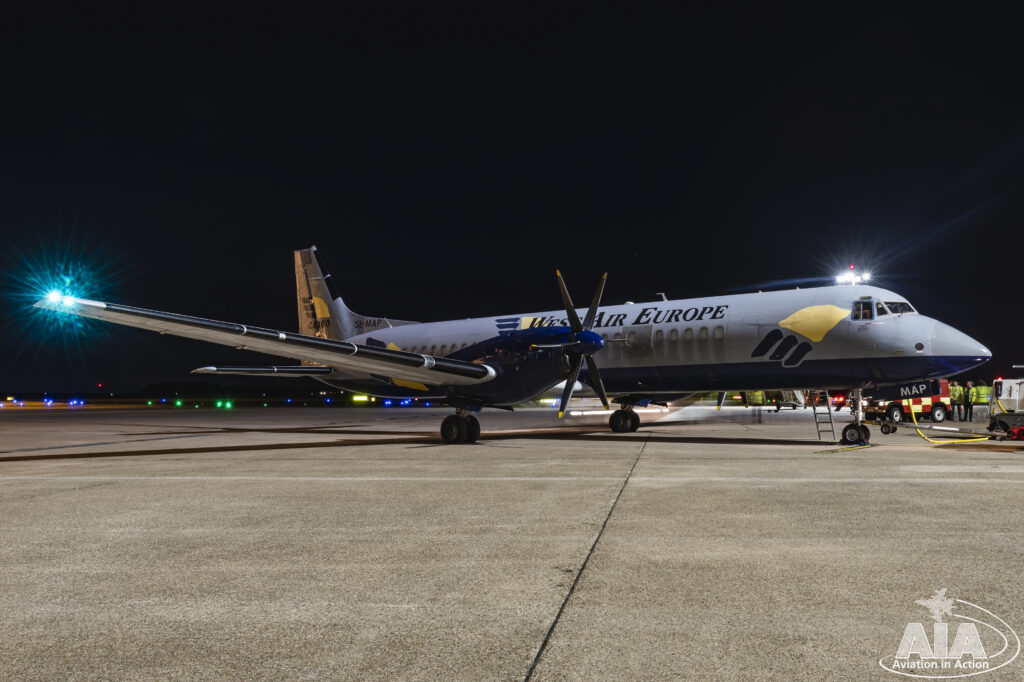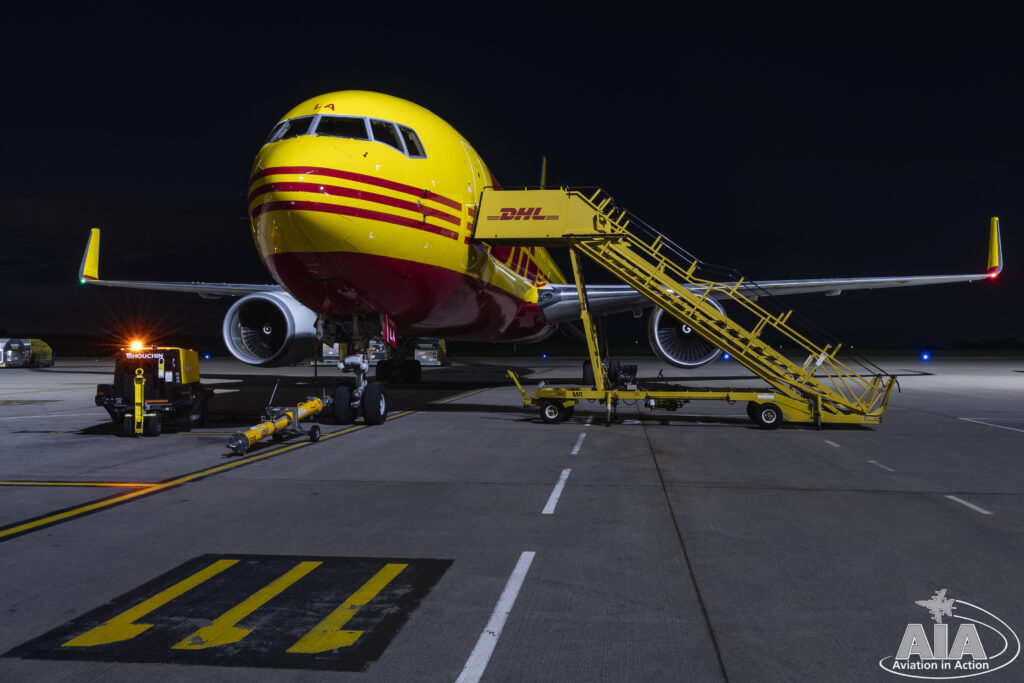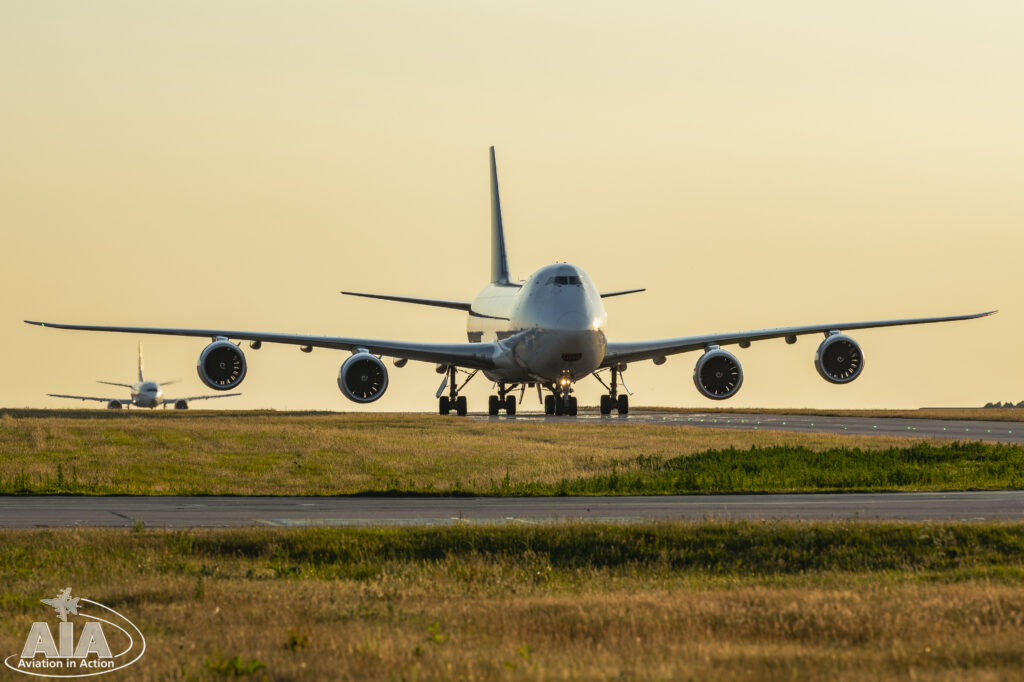East Midlands Airport, UK
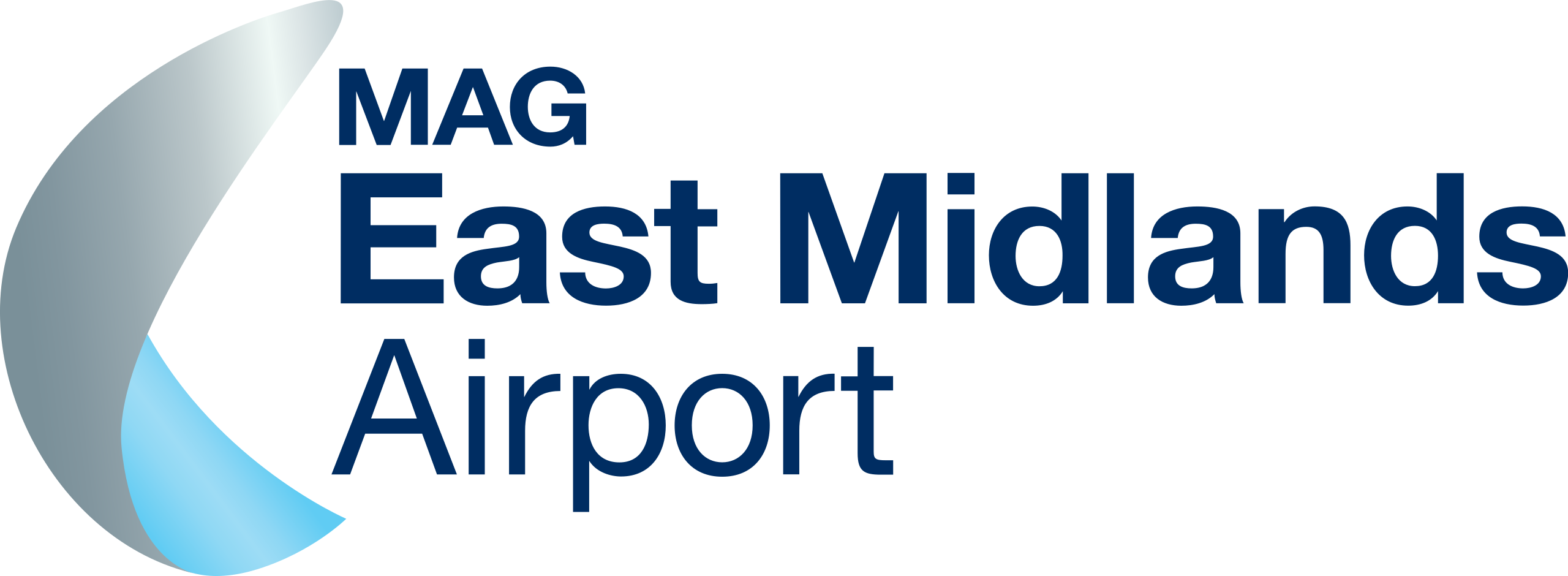
“World Express 361, East Midlands Tower, Runway 27 cleared to land, surface wind 290 at 11 knots”.
It’s the middle of night and whilst the majority of the country are fast asleep, a DHL 767 freighter glides in gracefully to land on runway 27 at East Midlands Airport, having left New York’s JFK just 6 hours earlier. Towards the end of June 2022, Aviation in Action were invited airside by the EMA Operations and Media teams to bear witness to the vast cargo operation taking place. This report will provide some context in relation to this incredible feat.
When comparing airports by passenger numbers, East Midlands Airport is only the 14th busiest airport in the UK (based on pre pandemic passenger figures). Located just south of the cities of Derby and Nottingham, it competes for passengers with larger airports such as Birmingham and Manchester, both of which can offer a wider range of destinations and carriers. But that doesn’t tell the full story, where East Midlands really excels is as an air freight hub. The airport is the main UK hub for a number of cargo airlines including DHL, UPS, FedEx and West Atlantic and also attracts many other charter cargo operators.
The airfield initially started its life as Royal Air Force Castle Donington. Being built during the height of the Second World War, RAF Castle Donington had three concrete runways and two main hangars. The airfield was used primarily as a training base, firstly to train RAF Bomber Command crews on the Vickers Wellington and later to train RAF Transport Command crews with the Douglas Dakota. At the end of the war, the airfield was deemed surplus to requirements and was closed as an RAF station in 1946. With this closure, the site was renamed to the Castle Donington Airfield.
In 1963, the East Midlands Airport Joint Committee bought the Castle Donington Airfield for the princely sum of £37,500 and in 1964 was granted planning permission to build a new £1.37 million airport. On 2nd April 1965, the new airport was officially opened by HRH Duke of Edinburgh with the airfield being renamed to East Midlands Airport. Today it has the UK’s sixth longest civilian runway at a length of 2,893 metres and has over 2 million square feet of dedicated ramp space for cargo.
The airport is currently owned by Manchester Airports Group (MAG), the largest British-owned airport operator.
At the time of writing, holiday charter and low-cost airlines form the majority of the passenger flights at East Midlands, with most of the flights being operated by either Jet2.com, TUI Airways or Ryanair. Other scheduled airlines that have flights from East Midlands include Blue Islands who operate their ATR72s to/from the island of Jersey, Aurigny (Channel Islands) and the newly relaunched Flybe who fly to Amsterdam and Belfast City.
From a general aviation perspective, East Midlands houses a purpose built hangar constructed for Rolls-Royce PLC who operate two aircraft, a Supermarine Spitfire PR.XIX PS853 (G-RRGN) and a North American P-51D Mustang 413779 (G-SHWN). The airport is also home to a number of other general aviation groups including the RVL Aviation, Donington Aviation, East Midlands Helicopters and the Donair Flying Club.
Undoubtedly the biggest cargo operator based at East Midlands is DHL Aviation, boasting a 63-acre, £35 million purpose-built facility located at the western end of the airport opened back in the year 2000. With further investment and development since, a major expansion at the Cargo West hub completed three years ago enabled DHL to build new office space accommodating its customer service team. Its total footprint now exceeds more than a million sq. ft, employing 3,000 people across daytime and evening operations. DHL UK has 16 aircraft based at East Midlands, flying from the airport to their hubs all across the world. As well as UK based aircraft, the DHL hub at East Midlands handles flights from the other DHL branded airlines such as European Air Transport Leipzig and Aerologic.
Not only on-site at the airport, DHL also has over 900,000 Sq. ft of warehousing located at the nearby vast SEGRO Logistics Park East Midlands Gateway adding to their enormous footprint on the local economy.
United Parcel Service (UPS) is another worldwide cargo company with a sizable base at East Midlands. Following the building of a new 28.5-acre, £114 million custom air freight terminal at the Eastern end of the airport, East Midlands is now UPS’s second biggest air logistics facility in Europe after Cologne, Germany. Their 747 and 767 freighters are becoming more common sights at the airport in their recognisable white and brown livery. Flights come in from Cologne, Edinburgh, Belfast and Philadelphia, bringing parcels destined for the parcel company’s 70-or-so UK centres. From there they are delivered to homes and pick up points up and down the country.
A further cargo carrier with a base at East Midlands is West Atlantic UK. They operate Boeing 737 and ATR-72 aircraft from the airport doing both charter cargo work and operating flights for Royal Mail, flying mail to and from different airports all across the UK.
Other airlines which can commonly be seen flying cargo into East Midlands include FedEx, ASL Airlines (normally operating on behalf of TNT and/or Amazon Air), West Air (flying their BAe ATP freighters), Star Air (flying the Boeing 767 on behalf of UPS) and numerous other charter cargo airlines.
Over 448,000 tonnes of cargo a year moves through East Midlands Airport, making it the second largest airport for freight handling in the UK, only London Heathrow handles more in terms of total volume of goods. However, by some way East Midlands Airport has the UK’s largest share of the freight-only aircraft market. Since 2013, East Midlands had seen a steady growth in annual cargo volumes, but following the Covid-19 pandemic, the amount of cargo moving through the airport increased significantly. This growth was mainly led by a greater consumer use of e-commerce (online shopping) during lockdowns.
The airport also played a key role during the height of the pandemic, where critical medical supplies and PPE was flown in during lockdown.
Being only a four-hour lorry drive to 90% of the population of England and Wales, EMA is perfectly positioned to ensure goods flown in and out of the country are with customers who need them most urgently. The impact of the UK’s largest dedicated air cargo operation benefits the whole of the UK, but businesses across the Midlands are the big winners thanks to the airport’s direct global connectivity.
East Midlands Airport has, by their own admission, ambitious plans for the ongoing development of the airport and the region. The focus of this is to enable the future expansion of existing logistics companies on site with a goal of handling upwards of one million tonnes in freight over the next 25 years. This somewhat creates a real draw to the area, enforced by a huge number of businesses across the region having long relied on the airport’s cargo operation, whilst still today a growing number of major logistics firms opt to locate themselves in and around the airport.
In March 2021, East Midlands Airport was announced as one of eight new UK “freeport” sites, driving investment and growth into the local economy and creating thousands of jobs. The airport has also said they wish to work with their existing airlines heavily to try and expand their schedules. Ultimately, these new opportunities will create jobs and wealth for people living in cities and towns across Derbyshire, Leicestershire and Nottinghamshire.
The team at AIA would personally like to thank Mr Ioan Reed-Aspley, Head of Media along with Mr Keith Booth and his operations team at East Midlands Airport. Your continued support and assistance to AIA goes above and beyond and we very much look forward to working with you again in the future.
